The effect of crystallization on the photopolarimetrical properties of Europa’s ice crust
- 1Crimean Astrophysical Observatory, Russian Federation (dvp@craocrimea.ru)
- 2Main Astronomical Observatory of Academy of Sciences of Ukraine (MAO NASU), Zabolotnoho 27 str., Kiev, 03143,Ukraine
- 3Astronomical Observatory of Taras Shevchenko National University of Kiev, Ukraine
- 4International Center for Astronomical, Medical and Ecological Research of the NAS of Ukraine, Kiev, Ukraine
Particles of water ice are an integral part of many objects of the solar system - from the Moon and comets to the satellites of giant planets. For example, Europa is the smallest of the four Galilean moons orbiting Jupiter, and has a water-ice crust on surface. To study the chemical and physical properties of Europa’s ice crust, both photopolarimetrical observations and computer simulation of light scattering are required. Fig. 1 represents the new most accurate the phase curve of polarization of Europa in the filter R, obtained in 2018-2019 at the 2.6 - m telescope of the Crimean Astrophysical Observatory and 2-m RCC telescope of the Pik Terskol Observatory.
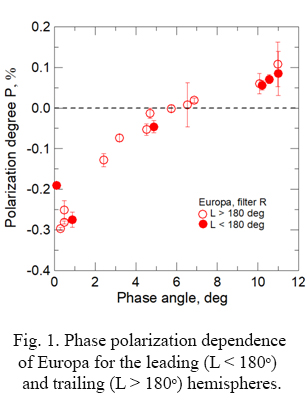
But for proper interpretation of observational data we should have information about the shape of the ice particles. Transition between amorphous and crystalline water ice phase can dramatically change the photopolarimetrical properties.
We carried out the computer simulation of light scattering by hexagonal ice crystals and amorphous ice particles (see fig. 2).
Shape of hexagonal crystals of water ice is described by Niels Bjerrum [1]. As a model of amorphous ice, random Gaussian particles were chosen, described in detail in [2].
The particles are characterized by a size parameter X = 2πR/λ, where λ is the wavelength of the incident light, and R is the radius of sphere of equal volume. Here we consider a wide range of wavelengths - from 0.4 μm to 2.8 μm.
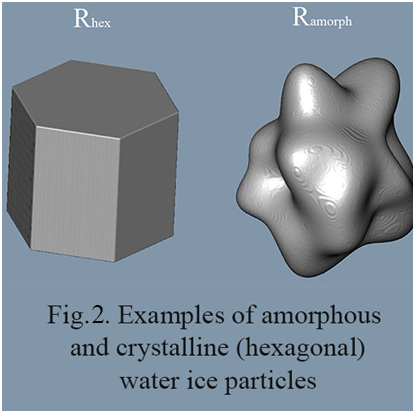
To calculate the light scattering properties of individual scattering particles the T-matrix method is often used [3]. Our calculations were performed by modifying the T-matrix method (the so-called Sh-matrices method, or the shape matrices method, described in [4, 5]).
Particles can be characterized by a complex refractive index m0 = n + i∙k. The spectral dependence of the refractive index (both real and imaginary parts) of ice particles on the wavelength is shown in Fig. 3. Data taken from [6].
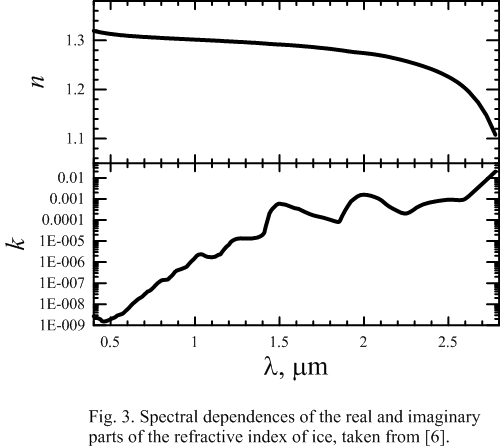
We calculated the intensity of light scattered by crystalline and amorphous ice particles at particles size R = 0.5µm. The results of the calculations are shown on figure 4. On this figure you can see the maps of ln(I), where intensity depends on both phase angle and wavelength of scattered light.
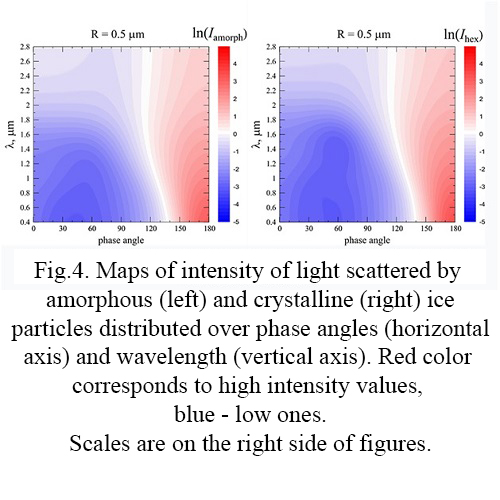
The linear polarization of scattered light by is characterized by the following equation:
(1)
where and are the intensity of perpendicular and parallel components of scattered light with respect to the scattering plane.
Figure 5 shows maps of the degree of linear polarization of amorphous and crystalline ice particles. The X axis corresponds to the scattering angle values, and the Y axis - to the wavelengths.
The figure shows a noticeable difference between the crystalline and amorphous structures. In the case of a crystalline structure, the branch of negative polarization is generally deeper and exists in a wider range of wavelengths.
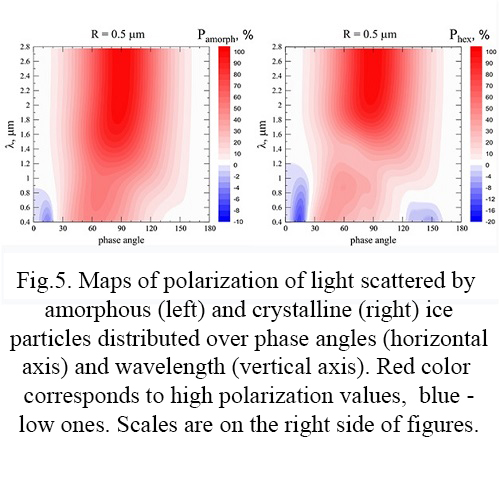
For the most visual demonstration of differences, Figure 6 is shown, on which maps of the difference in intensity and degree of linear polarization of light scattered by crystalline and amorphous ice are built.
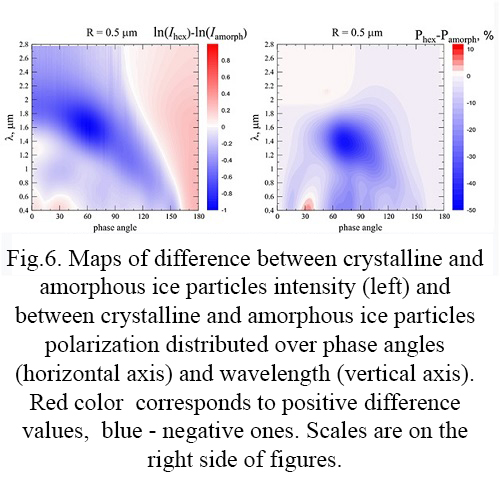
Based on figures, we can draw the following conclusions:
References
How to cite: Petrov, D., Savushkin, A., Zhuzhulina, E., Kiselev, N., Rosenbush, V., and Karpov, N.: The effect of crystallization on the photopolarimetrical properties of Europa’s ice crust, Europlanet Science Congress 2020, online, 21 September–9 Oct 2020, EPSC2020-532, https://doi.org/10.5194/epsc2020-532, 2020

